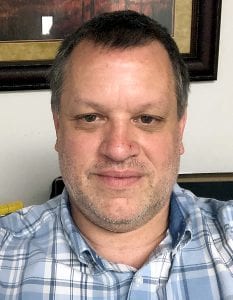
What’s a typical day like for you at Applied Test Systems (ATS)?
Things have changed quite a bit lately due to COVID-19. But, in general, a typical day involves me checking all the incoming website emails and distributing them out. I’ll run a lot of reports from backlog to quoting, and I’ll have a daily conference with all the sales personnel to see if anyone needs any help, I’ll also make sure everybody has followed up on their quotes.
I also do a lot of interfacing with production and the engineering team in order to make sure our customers are well taken care of. Quite often, I assist customers with operating their furnaces and control systems. New systems are great, but we don’t neglect customers who have older ones. If a customer has an issue with an older system, I will go above and beyond to troubleshoot the problem. Basically, I do a little bit of everything.
What does ATS offer the heat-treat industry?
We’re a manufacturer of custom furnaces with ranges up to 1,800°C as well as ones capable of negative temperatures using liquid nitrogen. We make large car-bottom-type furnaces running 40,000 pounds worth of metal to ones that are only a few inches in size.
And the furnaces we make are not just used in heat treating — it’s anything to do with heat. And that’s what I tend to tell people: If it has something to do with heat, let us look at it.
Have there been any recent developments that you’re excited about?
SAE has a specification AMS2750E, where everything has to be a certain uniform temperature within a specific area of the furnace. It is the user’s responsibility to make sure their furnace is within those specifications.
This particular aerospace specification says that anything heat-treated in a class 1 furnace has to be ±5 degrees Fahrenheit and you have to be able to verify this. Depending on your control system, you may have to prove monthly — or even weekly — that the furnace still meets those specifications.
ATS has recently developed a smaller unit that meets the specifications, and we are working on additional sizes that meet the AMS2750E specifications as well. We have also developed a furnace that has a class 2 uniformity range. This is what 90 percent of users require. In that same furnace, we can reach a class 1, but it’s in a reduced size.
ATS has manufactured a furnace that makes it easy for customers to install their survey sample with its required thermocouples. Typically, a customer will just run the thermocouples out of the door, causing the seal to go bad. The ATS design allows the customer to run the thermocouple through their own special port, which eliminates damage to the seal.
ATS has made these furnaces customer friendly; you don’t need to be a trained technician or have any special tool for maintenance. If they want to replace the heating elements, it’s very simple: just undo a couple of wires and then pull it straight out. Even though we installed a special port in the back where customers can run all the thermocouples for their temperature surveys, we still redesigned the door seal so that it can be replaced with only a screwdriver.
The customer was first and foremost in our minds when we designed the 3150 series furnace. It’s simple to maintain, and it allows customers to continuously do calibrations and surveys in order to keep their furnaces within specifications. And we designed it so it has an excellent uniform temperature.
What else can your customers expect from this?
We are able to supply the documentation and the certifications that meet the AMS 2750. And if the customer desires, we also can do the onsite commissioning and the inspection through our service department. Our service department is a certified calibration laboratory, and we operate under an ISO standard 17025. So, not only do we supply the equipment, but we can fully service it.
A lot of our customers are working under the National Aerospace and Defense Contractors Accreditation Program guidelines, which require the AMS 2750 uniformity.
And now, along with aerospace and defense, the automotive industry and other similar industries have picked up on this standard — not because they are aerospace-related, but because it’s a standard that they can all work off of.
The bottom line is that the materials our customers need will be in compliance.
Where do you see the heat-treat industry in the next 10 years and ATS’s place in that future?
As far as this specification at least, we do seem to think there’s going to be a lot more people needing to comply to these standards. This is going to nudge many in the heat-treat industry to be more precise and have tighter quality control. With Applied Test Systems, that is now possible and within reach.
MORE INFO www.atspa.com
























